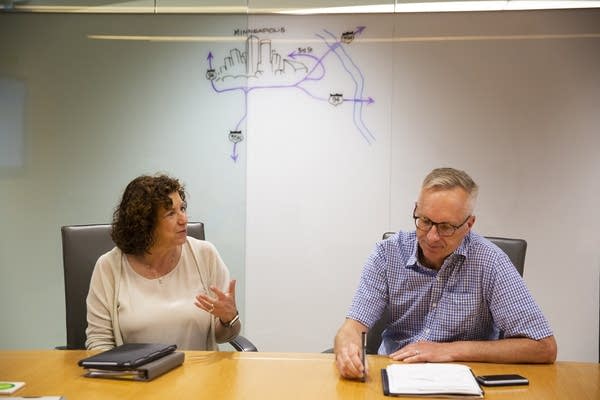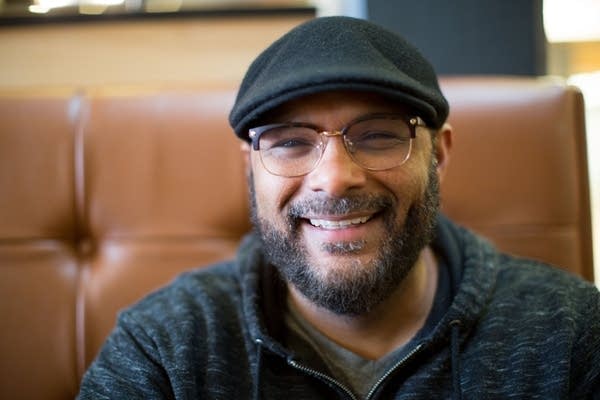When a graphic video can quell unrest but still do harm
As tensions boiled over in Minneapolis, city leaders and journalists wrestled with whether to post footage of a man killing himself

Go Deeper.
Create an account or log in to save stories.
Like this?
Thanks for liking this story! We have added it to a list of your favorite stories.
The release of a graphic suicide video in downtown Minneapolis has outraged some critics who say it was too harmful to share.
But Minneapolis officials say it was necessary to quell false rumors of a fatal police shooting. Some local media outlets shared the footage as well — even though journalists generally are trained to use extreme caution when reporting on suicide. Best practices suggest refraining from reporting on the details, let alone publishing video footage of it.
But this? This was complicated.
Rumors had spread Wednesday evening that Minneapolis police shot yet another Black man. Many people, still on edge from the killing of George Floyd in May, took to the street, some smashing storefront windows and setting fires to businesses. Protesters didn't trust what the police were saying, especially because the department's official account was misleading in the early moments after Floyd's death. An initial press release described Floyd as someone in “medical distress.”
Turn Up Your Support
MPR News helps you turn down the noise and build shared understanding. Turn up your support for this public resource and keep trusted journalism accessible to all.
Distrust is one of the reasons Suki Dardarian, managing editor of the Star Tribune, said it was necessary to publish raw evidence of what happened.

“Reading a version of the story that we have built may not be enough for some people,” Dardarian said. “Maybe they don't know us, maybe they don't trust us. But if we try and give them as much firsthand evidence and documentation, it helps them navigate that, it helps them navigate us — 'Oh, they're showing their work.' "
Star Tribune editors discussed the nature of the video and decided to edit the most graphic piece of it out before publishing, she said. They also thought the video would help de-escalate a violent situation downtown.
“Perhaps it did, perhaps it helped some people,” she added. “Obviously there is a lot of anger and frustration and that isn’t going to be quelled by a video. It’s underlying anger."
After things had calmed down by Thursday morning, the Star Tribune took the video down and explained why. The Minneapolis Police Department did the same.
MPR News never posted the video. Editors believed it would cause more harm than good. While covering instances of suicide may be newsworthy and important, research has shown people are more likely to copy methods of suicide when the media presents specific details.
Competing interests
It was an unusual move by a Minnesota police department to release this video so quickly. Historically, police and prosecutors have wanted the investigation to conclude first. In the case of the Floyd killing, a judge has released police body-camera footage to the public even before the trial has begun because the video was introduced as evidence along with a motion to dismiss charges against one of the officers.
Wednesday’s incident was captured by a street camera. Police say they were approaching a homicide suspect with a gun when he ended up taking his own life.
In this kind of situation, there are three competing interests: understanding the truth, holding the police accountable and minimizing the spread of suicide, said Kelly McBride, senior vice president at the Poynter Institute, a journalism school and research organization. The three are hard to balance in tense breaking news situations.
“My advice has been to be very clear about what your goal is,” McBride said. “Which interest are you most concerned with? And once you understand what your primary interest is, understand what the secondary harm is that you might cause and search for ways to minimize that harm.”
City officials say they understand the pain that watching the video has caused. But police Chief Medaria Arradondo said had they not released it, there would've been even more destruction with rioting and looting.

“We know that there is distrust right now in certain parts of our community,” Arradondo said. “We know that it's been only a few days since Kenosha. As soon as we started hearing the first rumblings that this was an officer involved shooting, we needed to get that information out.”
The Police Department cited a state law that allows for the release of this type of data if it will promote public safety and dispel widespread rumor or unrest. Police say they took it down later out of respect for the family of the man who died.
Some community members are skeptical, though. D.A. Bullock, an activist from Minneapolis, says the police kept the video online long after the unrest had ended.

Bullock had read the police account that it was a suicide — not an officer shooting. He believed it because it was backed up by Black community leaders with whom police shared the footage.
To him, posting the video online for all to see was traumatizing and not necessary.
“There has been a general narrative that they’ve been trying to drive for quite some time now,” Bullock said. “Long before George Floyd was killed was that there is a certain danger especially in downtown Minneapolis. And they don’t explicitly say that it is from Black youth, but everything they show is the danger of Black youth."
If you or someone you know are thinking about suicide — wait. There are trained counselors available to help 24/7, for free. Text the word TALK to the Crisis Text Line at 741741. Call the National Suicide Prevention Lifeline at 800-273-8255 (TALK).




